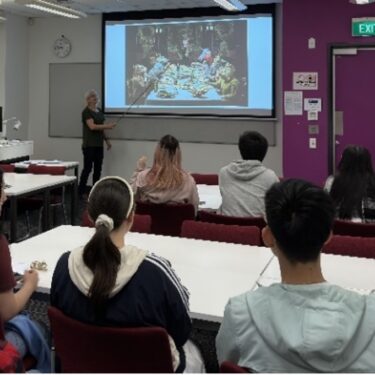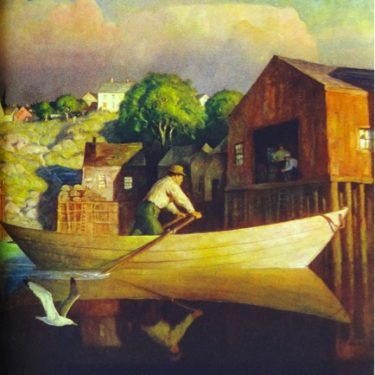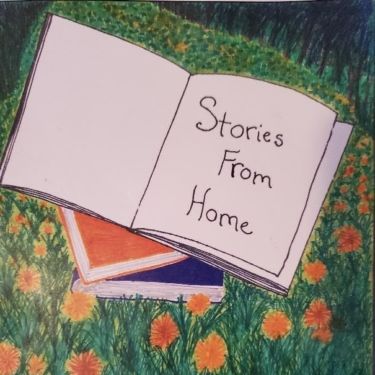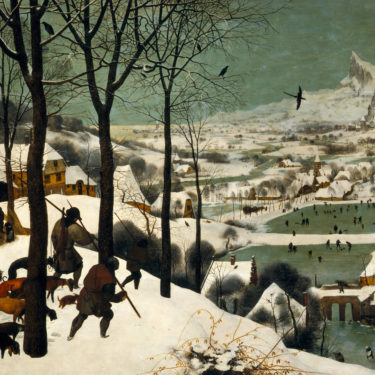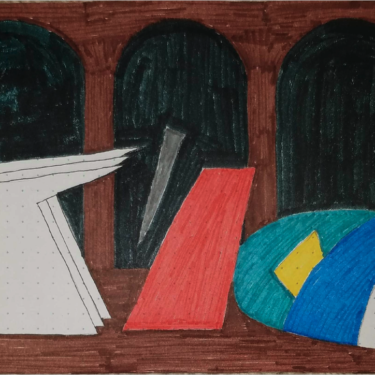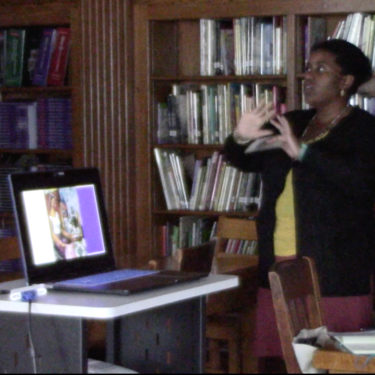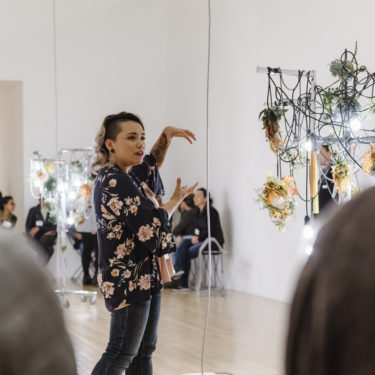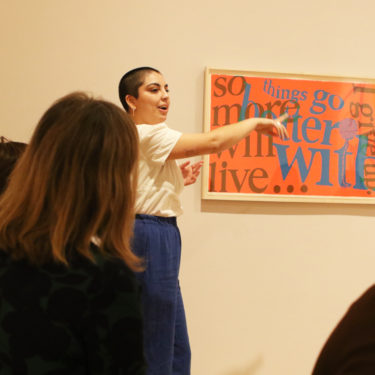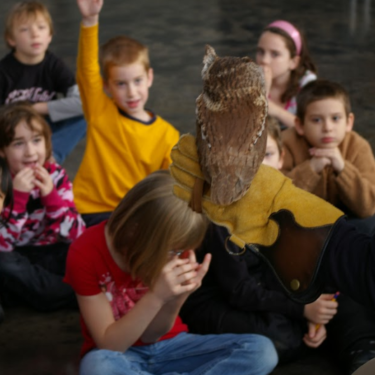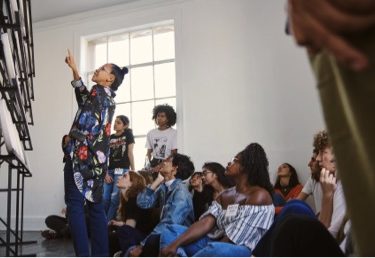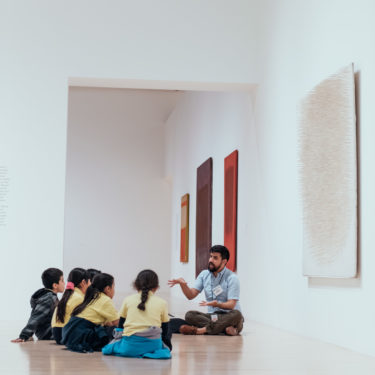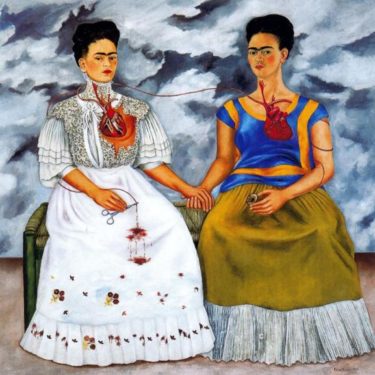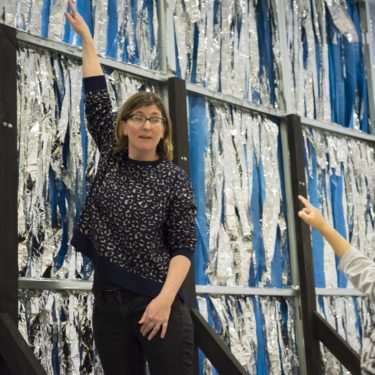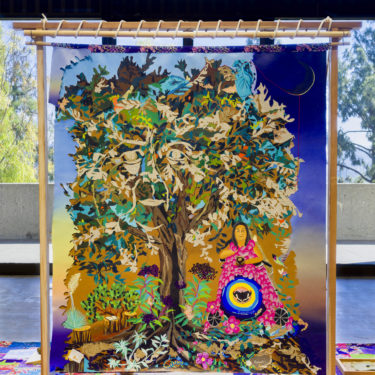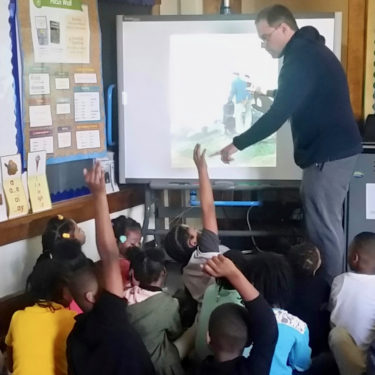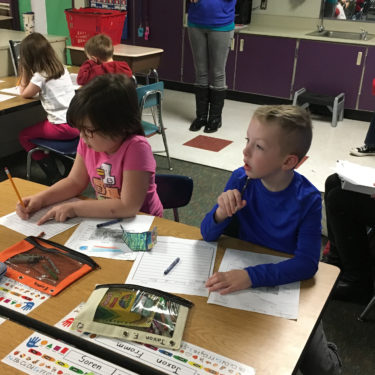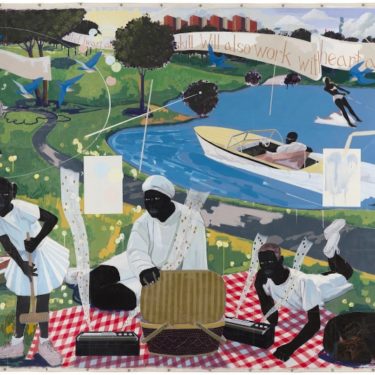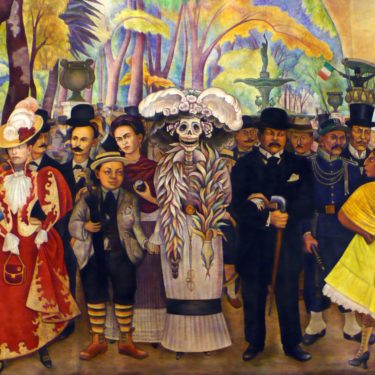-
-
Fall 2022
VTS Discussions Can Support (Functional) Illiterate Second-Language Learners
by Nanja Ruiter
VTS aligns well with effective second-language acquisition. -
Fall 2021
Note from the Editor
by Kabir Anderson-Singh
What choices do we make as educators that support students to take risks with their thinking? -
Fall 2021
How Artwork Changed My Classroom
by Katherine Bishop
I cannot expect my students to learn how to come to their own conclusions by continually redirecting them from a ... -
-
Spring 2021
Using VTS to Build Conversations with People Living with Dementia
by Siobhan McDonald
The non-judgmental nature of VTS synched seamlessly with what many memory care experts stress are best practices when ... -
Winter 2020
When Uncertainty Becomes Possibility: VTS and Creative Problem-Solving
by Jessica Hunter-Larsen
-
-
Summer 2020
Practice and Compassion
by Madsion Brookshire
How can we achieve a feeling of connectedness when many of us cannot be physically close to our students? -
Summer 2020
Online Image Discussions
by Xenia Walker
How do we hold Visual Thinking Strategies image discussions online? -
-
Winter 2019
About Language
by Raquel Rojas
How do we as teachers both support language development and deconstruct the structures of language that erase histories? -
Winter 2019
Creating a Shared Language: English Learners and Bilingual VTS
by Lupe Limón Corrales
VTS is about making meaning through group discussion, but what happens when the participants do not share a common language? -
Fall 2019
VTS at the Natural History Museum of Los Angeles County
by Molly Porter
A T. rex skeleton may not have narrative, but the parallels between scientific observation and VTS are strong -
-
Fall 2019
When the “Picture” Is Not a Picture: Opening a Discussion
by Kerri Ziemann
There is an art to crafting new VTS experiences. For instance, how can VTS work with a live animal? -
Summer 2019
Letter from the Editor
by Yoon Kang-O'Higgins
VTS has been engaging in reflective practice around issues of race, class, gender, and ability in order to increase ... -
Summer 2019
What More Can We Do?
by Kai Monet
How do our choices as “neutral” facilitators uphold dominant narratives and perpetuate oppression? -
Summer 2019
VTS, Learning Environments for People of Color, and Antiracist Pedagogy
by Kabir Anderson-Singh
When separated educational settings are used intentionally, they can be essential for strong racial identity development. -
-
Spring 2019
Using VTS to Teach Claims, Evidence, Reasoning, and Writing
by Aija Simmons
VTS allows students to engage in productive discussion, learn to form an argument, and transfer skills to other content areas. -
Winter 2018
The Gift of Sight: Why You Cannot VTS on Your Own
by Julia Moustacchi
The core of the VTS experience lies in the fact that it takes place with other people. -
Winter 2018
Learning to Listen
by Madsion Brookshire
Listening is necessary for any conversation, but listening well expresses something meaningful in and of itself. -
Winter 2018
Tending a Garden Requires Care: VTS, Making Art, and Deep Listening
by iris yirei hu
Learning requires collaboration and a humble reorientation to knowledge that encourages improvisation. -
-
Fall 2018
Letter from Milwaukee
by Joseph Zimmer
VTS has become a vital part of my instruction and I am convinced it can work for all students. -
-
Summer 2018
The Power of VTS Writing Lab Changed Me, Then My School District
by Marion Schlicker Bageant
Three, deceptively simple questions changed my teaching practice forever. I wondered, could we also teach writing using VTS? -
Spring 2018
Honoring Students, Teachers, and the Work of Kerry James Marshall Through VTS
by Jeanne Hoel
How VTS helped shape communities of practice that value diverse input and prioritize inclusive discussion. -
-
Spring 2018
As Opposed To…
by Kim Aziz, Madsion Brookshire, and Mirka Jablonski
Clearly, the curriculum was failing this classroom. How should a facilitator respond in such a situation?
Site-Specific
The Journal of Visual Thinking Strategies
Latest Edition
A Note from the Editor
In this edition of Site Specific, Kim Brackley, Lynne Petersen, and Trudi Aspden, an author team of pharmacists and university educators based in Auckland, New Zealand, reflect on the ways that they use Visual Thinking Strategies as a teaching tool to help their learners—hospital pharmacists and pharmacy students—to better provide person-centered healthcare for their patients.
I myself first used VTS as an art museum educator. I was impressed and inspired by how learner-centered the method was. As a facilitator, I learned to set aside my thoughts and background knowledge about works of art to really listen to the K–12 students I worked with, centering them as museum visitors and viewers. In the years since as a VTS Trainer, I have witnessed VTS have the same impact on the teaching practices of so many other professionals in education and the arts as it had on mine.
I am excited to learn from Kim Brackley, Lynne Petersen, and Trudi Aspden, about the impact that VTS has had on them and on the healthcare professionals they work with, just as it impacts many healthcare professionals worldwide who use VTS in their practice. In their essay, they provide a framework for thinking about the ways that VTS benefits the pharmacy profession, with respect to social-emotional learning. They share powerful quotes from pharmacy students who found that their time having VTS discussions helped them better embrace ambiguity and see multiple perspectives. Furthermore, the adaptations the authors make to the VTS method to best support their learners have implications for VTS practitioners both within and outside the fields of pharmacy and healthcare. I particularly appreciate how they give learners familiar with VTS the agency to choose what images they discuss.
I hope you enjoy reading this edition of Site Specific and learning more about the ripple effect that three VTS practitioners in pharmacy can have on their colleagues, students, and in turn all of their patients.
—Kabir Anderson-Singh
Special thanks to Sara Lasser Yau, peer reviewer for this edition.

